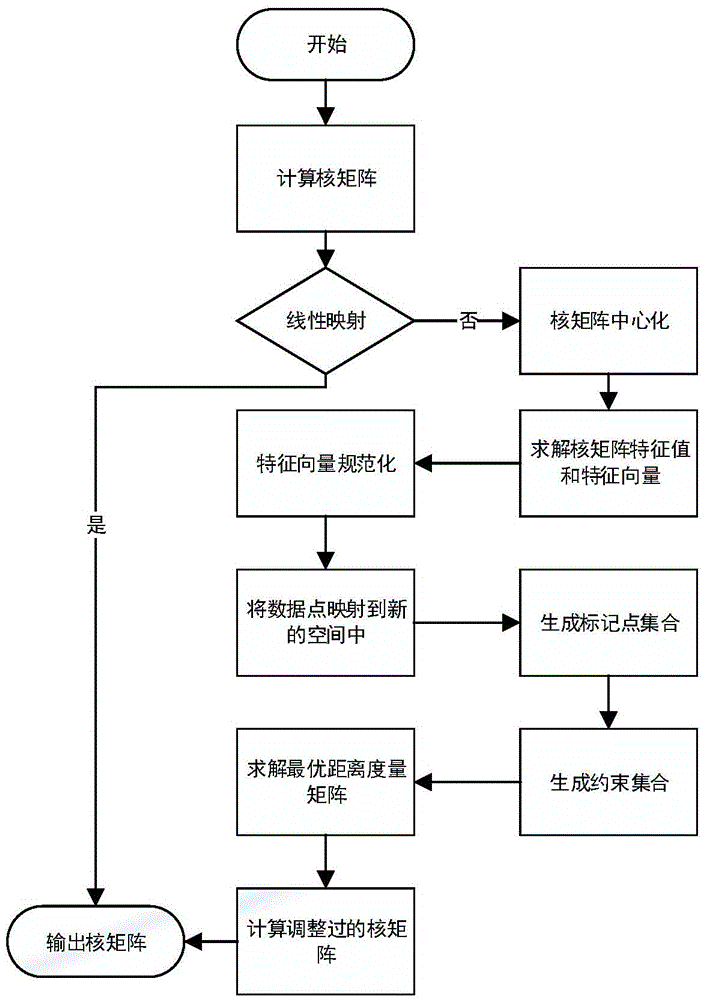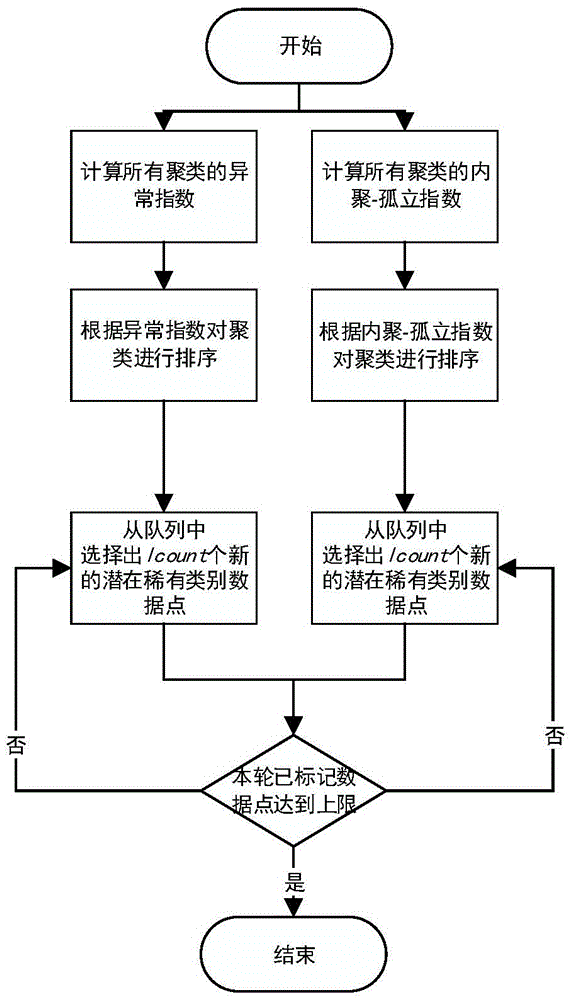Kernel function based rare category detection method fusing active learning and nonparametric semi-supervised clustering
A semi-supervised clustering, active learning technology, applied in character and pattern recognition, instruments, computer parts, etc., can solve the problem of not finding rare categories
- Summary
- Abstract
- Description
- Claims
- Application Information
AI Technical Summary
Problems solved by technology
Method used
Image
Examples
Embodiment
[0063] Embodiment: A rare category detection method based on kernel function fusion active learning and non-semi-supervised clustering. The method has three stages: semi-supervised clustering hierarchical construction, active learning based on multiple standards, and iterative control process.
[0064] Among them, the semi-supervised clustering hierarchical construction stage includes the kernel function-based distance metric learning sub-stage and the non-parametric clustering hierarchical construction sub-stage.
[0065] 1) Distance metric learning based on kernel function, the process is as follows figure 1 shown.
[0066] Step 1, calculate the kernel matrix K of the dataset X in the kernel space based on the selected kernel function; if it is a linear mapping, directly output the matrix, otherwise perform steps 2-9.
[0067] Using the mapping function φ(x), the data set X=(x 1 ,x 2 ,...,x n ) from the original Euclidean space to the inner product space (kernelspace). ...
PUM
 Login to View More
Login to View More Abstract
Description
Claims
Application Information
 Login to View More
Login to View More - R&D
- Intellectual Property
- Life Sciences
- Materials
- Tech Scout
- Unparalleled Data Quality
- Higher Quality Content
- 60% Fewer Hallucinations
Browse by: Latest US Patents, China's latest patents, Technical Efficacy Thesaurus, Application Domain, Technology Topic, Popular Technical Reports.
© 2025 PatSnap. All rights reserved.Legal|Privacy policy|Modern Slavery Act Transparency Statement|Sitemap|About US| Contact US: help@patsnap.com



